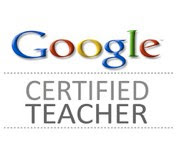Digital Portfolios
Kati Searcy
One of the concurrent sessions I attended at FETC was a session on Digital Portfolios. I'm not sure of the need to actually blog notes from the session, as any good presenter shares his or her session online. But, since I sometimes enjoy taking notes, I figured I'd share them here. Here are Kati's presentation slides as well as samples and additional resources on digital portfolios.
Traditional Assessment:
•Recall or Recognize
•Meets need of teacher
•Multiple choice, fill in the blank, true/false, matching (forced choice)
•Summative, not formative
•Teacher-structured
•Indirect Evidence
People in room asked to discuss what %age of assessments at their school are traditional assessments, answer is 60-80% or more.
Authentic Assessment
•Measures ability using real-world challenges
•Students construct own responses rather than select
•Students choose task/student-structured
•Direct evidence
Selecting your portfolio medium:
•paper-based vs. digital/online
lots of reasons given why it is better to move away from paper-based portfolios and move toward digital portfolios:
-minimal storage
-easy to create/back-up
-can be reproduced, shared
-interactive
-long shelf life
-increases tech skills in a meaningful way
Disadvantages of digital
-access to equipment
tech skills with younger students
can be difficult for one teacher to orchestrate esp. w/younger students (process not usually as much an issue as tech troubleshooting)
Ultimately, we want the best of both, traditional and authentic.
What is a portfolio?
A collection of student work over a period of time
purposefully selected by student
demonstrates how and what student has learned and how they feel about it
conveys a students abilities, experiences, achievements, etc.
A portfolio is a creative means of -
organizing
summarizing
sharing artifacts
sharing information
sharing ideas about learning
reflecting
evaluating
setting goals
What can be in a digital portfolio?
EVERYTHING!
-scanned handwritten work
-Photo documentation of activities, field trips
-games/products students have created
-written reflections
-document science experiments (video, photos, etc) [here she showed an example of a science experiment her students did with potatoes, they took pictures and made a video w/animoto showing all the pictures of the experiement--very cute!]
wiki- set up teacher account, give student access
Advantages of web-based:
-read-world audience
-motivating
-continue documenting learning outside of school
Disadvantages of Web-based portfolios:
-maintaining student anonymity
-if you have inconsistent access to Internet at your school
she recommends Inspired Classroom (said to google it - I did, but couldn't figure out which of my google results had to do with web portfolios?)
My note: I don't see these as disadvantages. I am lucky to have consistent Internet access at school, and I think this is yet another way to teach students 21st century skills, how to represent themselves safely and appropriately online.
Types of portfolios:
Working portfolio - work in progress
Showcase portfolio -students favorite pieces
Evaluation portfolio -used to document progress, used for grading
Reflection Requires:
Instruction and modeling,
feedback
practice
Questions--
What are the strengths of this work?
What are the weaknesses of this work?
What did you learn from this?
What could have made this better?






No comments:
Post a Comment